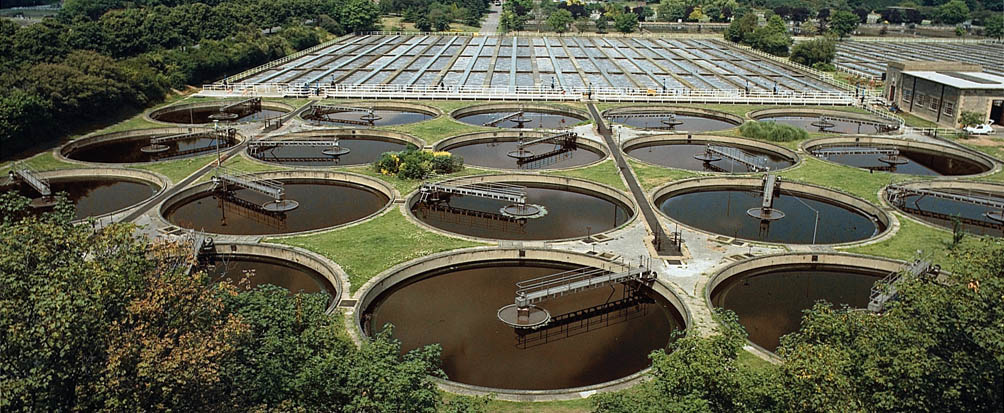Ingenious Techniques to Waste Water Treatment Technologies
Wiki Article
Strategic Approaches to Enhance Drainage Treatment Effectiveness and Minimize Environmental Effect
In the realm of waste water therapy, the pursuit for boosted efficiency and minimized environmental impact is a continuous obstacle that demands critical solutions. As society comes to grips with the important to handle water sources sustainably, a nuanced technique comes to be crucial. The integration of advanced treatment technologies, energy-efficient processes, resource healing methods, improved nutrient removal methods, and clever tracking and control systems represents a diverse framework for dealing with these pressing concerns. However, what lies at the core of this facility internet of methods is the prospective to reinvent the method we approach waste water therapy, not simply as a process of disposal, however as a useful chance for development and environmental stewardship.Advanced Treatment Technologies
Sophisticated membrane filtering systems have actually transformed innovative wastewater treatment procedures, considerably improving the elimination of pollutants. These cutting-edge systems function forcibly water through a semi-permeable membrane layer, effectively dividing contaminations from the water stream. The membrane's microscopic pores catch toxins such as bacteria, viruses, and put on hold solids, permitting only cleansed water to travel through. This technology has actually confirmed to be extremely effective in removing a vast array of pollutants, consisting of drugs, hefty metals, and organic compounds, which are usually challenging to get rid of with typical treatment techniques.Furthermore, membrane purification systems supply various benefits over conventional therapy approaches. They require much less space, produce higher-quality effluent, and are more immune to fluctuations in influent water top quality. Additionally, these systems are very functional and can be easily integrated right into existing therapy plants or utilized as standalone units for decentralized applications. As the demand for tidy water continues to increase, the fostering of innovative membrane purification modern technologies is vital to make certain sustainable and efficient wastewater therapy techniques.
Energy-Efficient Processes
The assimilation of energy-efficient processes in wastewater therapy systems is critical for optimizing resource usage and reducing functional expenses. By applying energy-efficient innovations, therapy plants can substantially lower their carbon impact and general ecological influence. One key method to boosting energy efficiency in wastewater treatment is the use of innovative oygenation systems, such as great bubble diffusers or surface area aerators, which can boost oxygen transfer effectiveness and minimize power usage. Additionally, incorporating power recuperation systems, like anaerobic digestion for biogas manufacturing or making use of excess warmth for thermal procedures, can help counter power requirements and promote sustainability.Additionally, maximizing procedure control and automation via the use of innovative sensing units and keeping track of systems can boost overall power efficiency by adjusting operations in real-time based upon real need and problems. Implementing power audits and consistently checking power efficiency indicators are crucial methods to identify areas for enhancement and track energy-saving campaigns effectively. On the whole, the fostering of energy-efficient processes in wastewater treatment not just benefits the setting but likewise contributes to long-lasting cost financial savings and operational sustainability.
Resource Recuperation Approaches
With a concentrate on enhancing source utilization and sustainability in wastewater treatment systems, the implementation of source recovery strategies becomes a crucial aspect in boosting functional efficiency. Resource recovery strategies in wastewater therapy include the recognition and extraction of useful sources from the waste stream, thereby transforming what was as soon as considered waste right into a explanation beneficial property. By executing resource recuperation techniques such as nutrient elimination and recovery, power generation from organic matter, and the manufacturing of reusable water, wastewater treatment plants can reduce ecological impact while making the most of performance.
Boosted Nutrient Elimination Techniques
Carrying out innovative nutrient elimination strategies is vital for optimizing the efficiency of wastewater therapy systems. One of the essential techniques utilized for boosted nutrient elimination is the process of organic nutrient removal (BNR), which entails the have a peek at this site elimination of nitrogen and phosphorus with biological procedures.
Along with BNR, advanced therapy methods such as membrane bioreactors (MBRs) and created marshes can likewise be utilized to enhance nutrient removal effectiveness. MBRs make use of membrane layers to accomplish high-quality effluent criteria by successfully eliminating nutrients and suspended solids. Created wetlands imitate all-natural marsh processes to remove nutrients via plant uptake, microbial task, and sedimentation. By integrating these innovative nutrient removal techniques into wastewater therapy sectors, municipalities and systems can properly minimize nutrient air pollution and shield the setting.
Smart Tracking and Control Equipment
Making use of cutting-edge innovation, the integration of smart surveillance and control systems reinvents the operational performance of wastewater treatment facilities. These systems integrate advanced sensors and information analytics to continually monitor key specifications such as pH levels, turbidity, dissolved oxygen, and flow prices in real-time. By gathering and examining this information, operators can acquire valuable insights into the performance of the treatment processes, making it possible for positive changes to optimize treatment efficiency.Smart monitoring and control systems additionally support remote surveillance capabilities, permitting operators to accessibility real-time information and control functions from off-site places. This remote accessibility enhances functional flexibility and responsiveness, allowing swift interventions in case of system breakdowns or fluctuations in influent top quality. The anticipating upkeep abilities of these systems aid stop equipment failures and reduce downtime, ultimately enhancing the overall integrity of wastewater therapy procedures.
Conclusion
To conclude, strategic approaches such as sophisticated therapy modern technologies, energy-efficient procedures, resource recuperation methods, improved nutrient removal techniques, and wise monitoring and control systems play an important function in improving wastewater therapy efficiency and decreasing ecological influence. By executing these methods, wastewater therapy plants can boost their total performance, lower energy usage, recuperate useful resources, and ensure compliance with ecological regulations. These methods are crucial for sustainable and efficient wastewater monitoring techniques.
In conclusion, critical techniques such as advanced therapy modern technologies, energy-efficient processes, resource healing methods, enhanced nutrient elimination strategies, and clever tracking and control systems play an essential role in improving wastewater treatment effectiveness and reducing ecological influence.
Report this wiki page